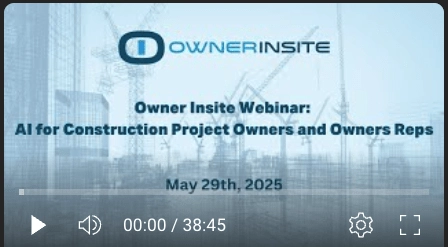Healthcare Construction: Unique Challenges and Increased Demand
When most people think of construction, they probably think of new homes being built or skyscrapers in the downtown area. Maybe they even think of commercial development or the ever-present construction crews we all see on roads and highways all the time.
What most people don’t think about is healthcare construction. It’s not something we see too often, and even when we do, these kinds of projects can take many years to complete. So they just become another part of the landscape.
However, if you’re involved in healthcare infrastructure planning, you probably know just how challenging this kind of project can be.
Ever Increasing Demand for Healthcare Services
The recent pandemic certainly played a big role in highlighting the shortfall in healthcare services and facilities in the developed world, including the USA. But once-in-a-lifetime pandemics aren’t the only challenges we’re facing when it comes to healthcare infrastructure construction.
Like many developed countries, the United States is facing a huge increase in healthcare demands driven by an aging population. In fact, a study by the United States Census Bureau concluded that by 2060, a quarter of all Americans would be 65 years old or older.
Since age is also associated with an increased demand for healthcare systems and services, this alone will drive the demand for more hospitals, specialist medical services, doctors’ offices, long-term care facilities, and more.
The clock is ticking, too, so it’s important that the planning, construction, and commissioning of these facilities take place as quickly and efficiently as possible.
Exponential Market Growth
While healthcare construction is and certainly will remain a race against time because we know we have nowhere near the capacity to serve everyone who will need it in the coming years, there’s also a huge growth in the healthcare industry market just around the corner.
Healthcare is a necessity. No one gets to choose when they need it. This means that forward-thinking healthcare providers who invest in infrastructure now stand to reap the benefits in the years and decades to come.
In short, there’s never been a better time to build healthcare infrastructure.
Unique Challenges
One of the things that makes healthcare construction, so complex is that there are unique challenges to this kind of construction.
Not only do you need to plan the usual plumbing, lighting, finishes, and so on, but you also have to plan and install pressurized oxygen lines, complex nurse call systems, backup generators, and more. In fact, much of the construction of any healthcare facility is literally a matter of life and death.
Hiring the right construction management team and the general contractor is a good start, but it’s not always enough to ensure that your projects stay on track.
Taking An Active Role in Healthcare Construction
As a professional who works as a healthcare administrator or procurement, you already have direct involvement with these kinds of construction projects, but it can be tricky to figure out just how involved you need to be.
Architects and engineers might not welcome too much direct interference, and many professionals who work at this level of healthcare administration also don’t have the time to attend every on-site progress meeting.
Fortunately, these days, there is technology that can help to solve these kinds of balance-related problems.
Construction Management Software for Non-Construction Industry Professionals
If you’re working on a large healthcare project, the various architects, engineers, contractors, and other technical stakeholders will probably already be using various kinds of software to track progress, address problems and measure production. Many of these, like BIM, MS Project, and others, are quite complex though, and they’re usually full of the information you won’t need to ensure your goals and requirements are being met.
Many general contractors also have their own intranet or FTP sites, so they can store and access project documents. But you probably also don’t want to be wading through RFPs, NCRs, and incident reports just to try to piece together the information you do need.
What you really need to ensure that your healthcare construction projects stay on track is a simple system that focuses on what really matters to you: budget and timeline.
While there might very well be architects and engineers on your healthcare construction management team, they probably have many projects underway at the same time, and they just don’t have the time to dive into the depths of every project.
That’s why we built Owner Insite. We know that Owner input is necessary to ensure critical infrastructure projects remain on track and meet completion targets. But we also know that healthcare and hospital administrators and procurement professionals don’t want to have to learn all kinds of new terminologies and technologies and that the construction professionals that are on their teams already have very full to-do lists.
The Owner Insite system is easy to master and intuitive and ensures that your professional construction team knows exactly what you need to know and when you need to know it. So you can log in when you need to, make sure there are no red flags, and leave them to do what they do best.
Bon Secours Mercy Health - A Owner Insite Success Story
Owner Insite works with many different healthcare organizations, but one of the longest and most successful relationships we’ve had is with Bon Secours Mercy Health.
This organization operates many healthcare facilities ranging from small, rural healthcare facilities to hospitals with hundreds of beds.
They not only have to maintain and improve all their existing facilities, but they also build new hospitals, doctor’s offices, ambulance depots, and more. In fact, their capital expenditure budget for construction is around $1 billion per year.
It’s fair to say that their construction team’s leadership is very busy, and their focus usually falls on cost, schedule, and documentation. Like many companies that are involved in construction from an ownership perspective, people like Chris Knueven, VP of Design and Construction, and Molly Ironmonger, Assistant Director of Planning and Pre-Construction, need to leverage software tools that allow them to access information quickly.
Previously, it just wasn’t ideal for their team to wade through a patchwork of emails, documents, different software packages, and more. Furthermore, it didn’t allow the team to accurately measure their actual costs and construction performance.
Owner Insite has changed all of that, creating a single source for Chris, Molly, and their teams, with a focus on the things that matter most to their organization. Additionally, the ability to have and retain all communication and documentation in perpetuity is critical for a management team. This all means that they are better equipped to plan their next projects and keep delivering healthcare facilities where they are most needed.
Our CEO and Owner Steve Harper recently recorded a podcast episode starring Chris and Molly in which they share their perspectives on some of the challenges they face in the Healthcare industry. They mention their past struggles of having to use multiple different systems to piece together the puzzle and how it just wasn’t effective. Now with Owner Insite, they have a one-stop shop for everything from staying on track with their project team to managing large budgets so they can provide healthcare facilities where they are needed most.




